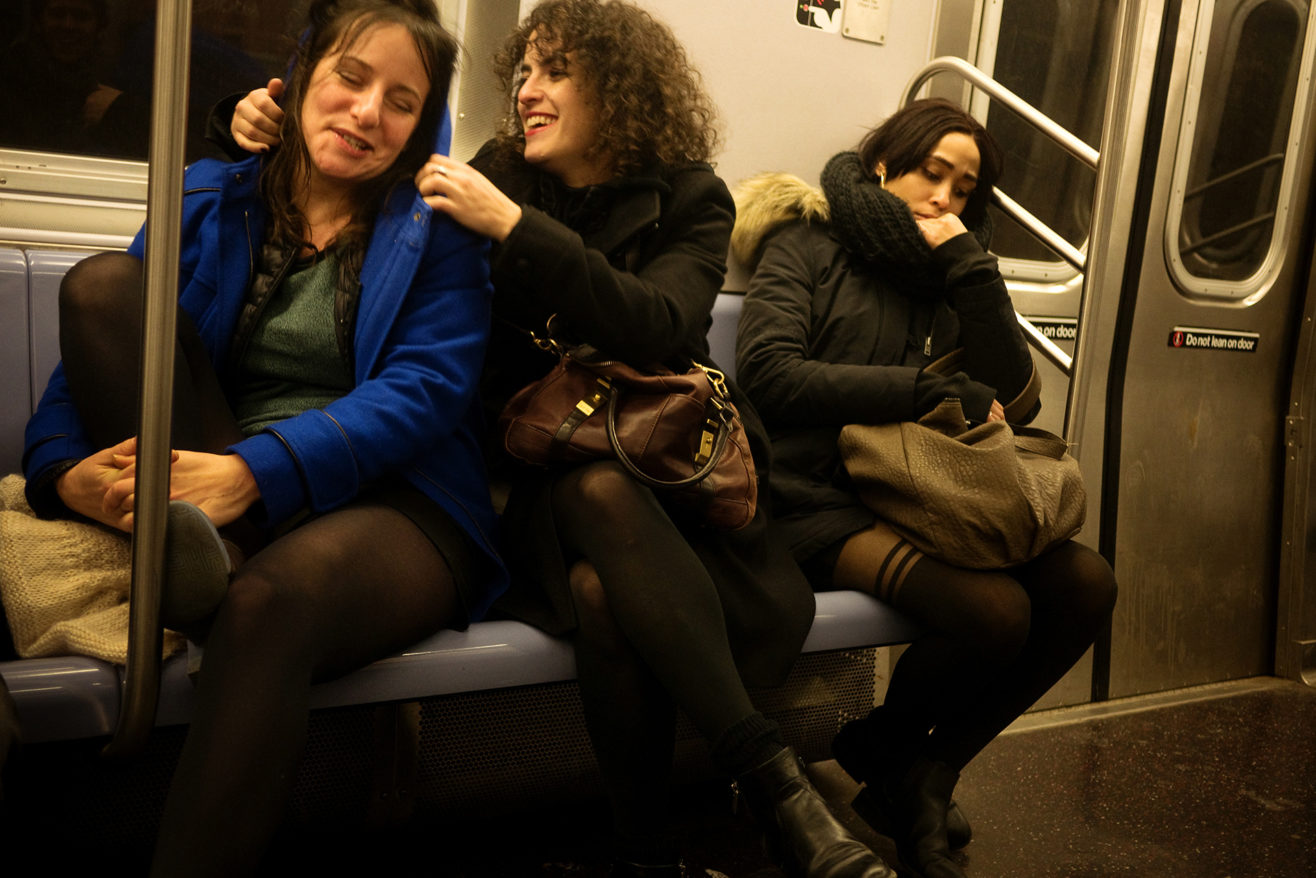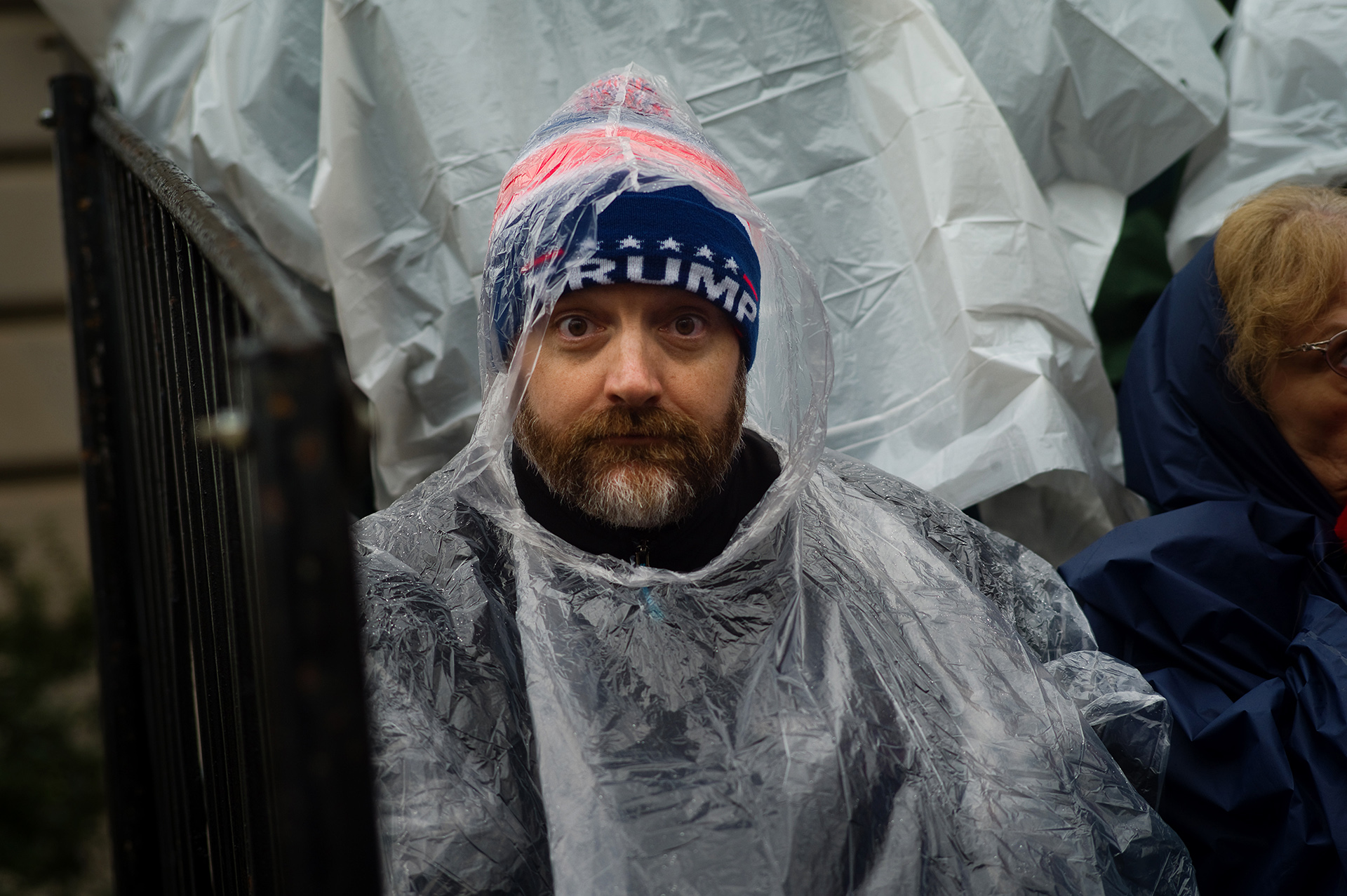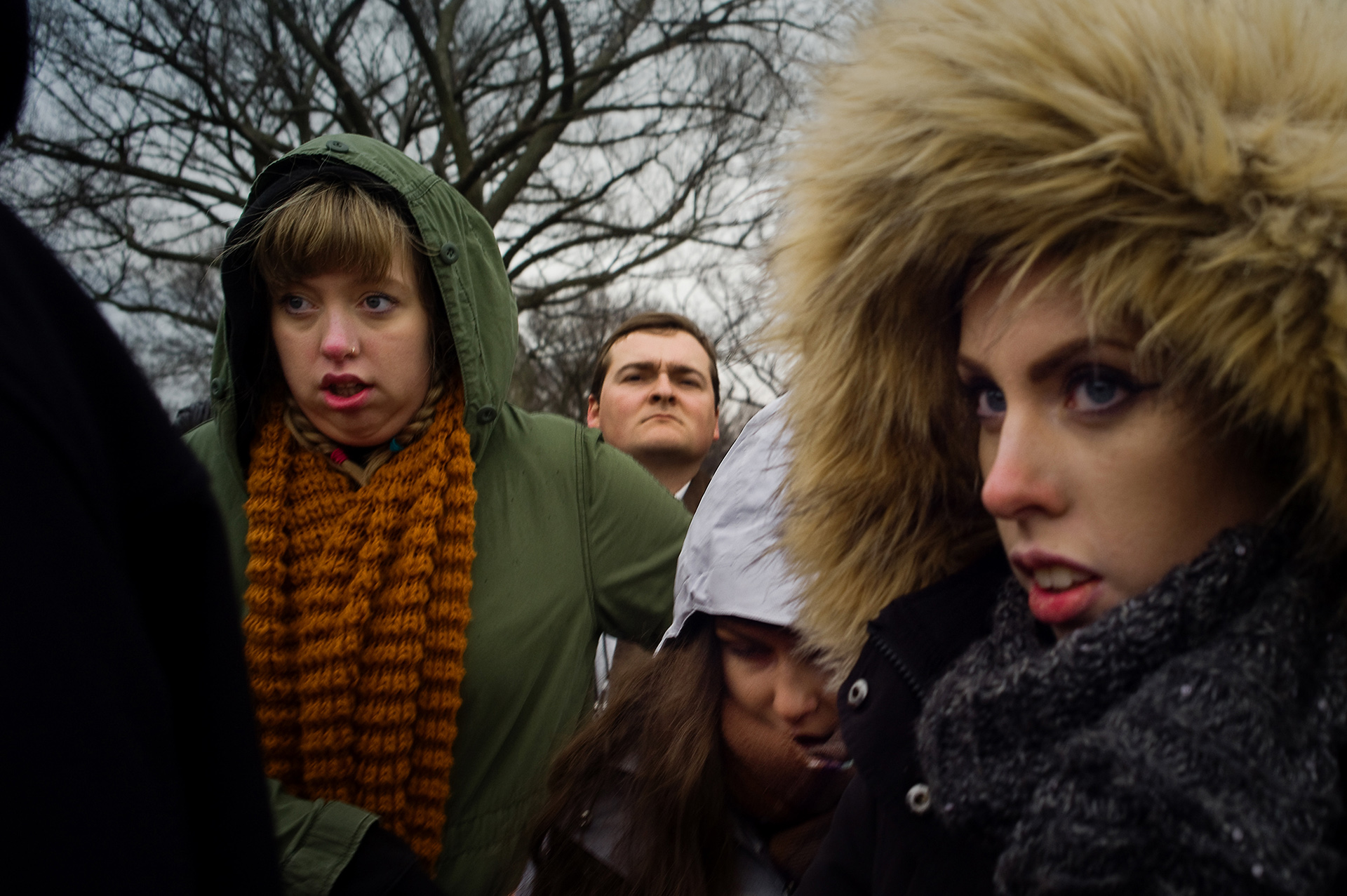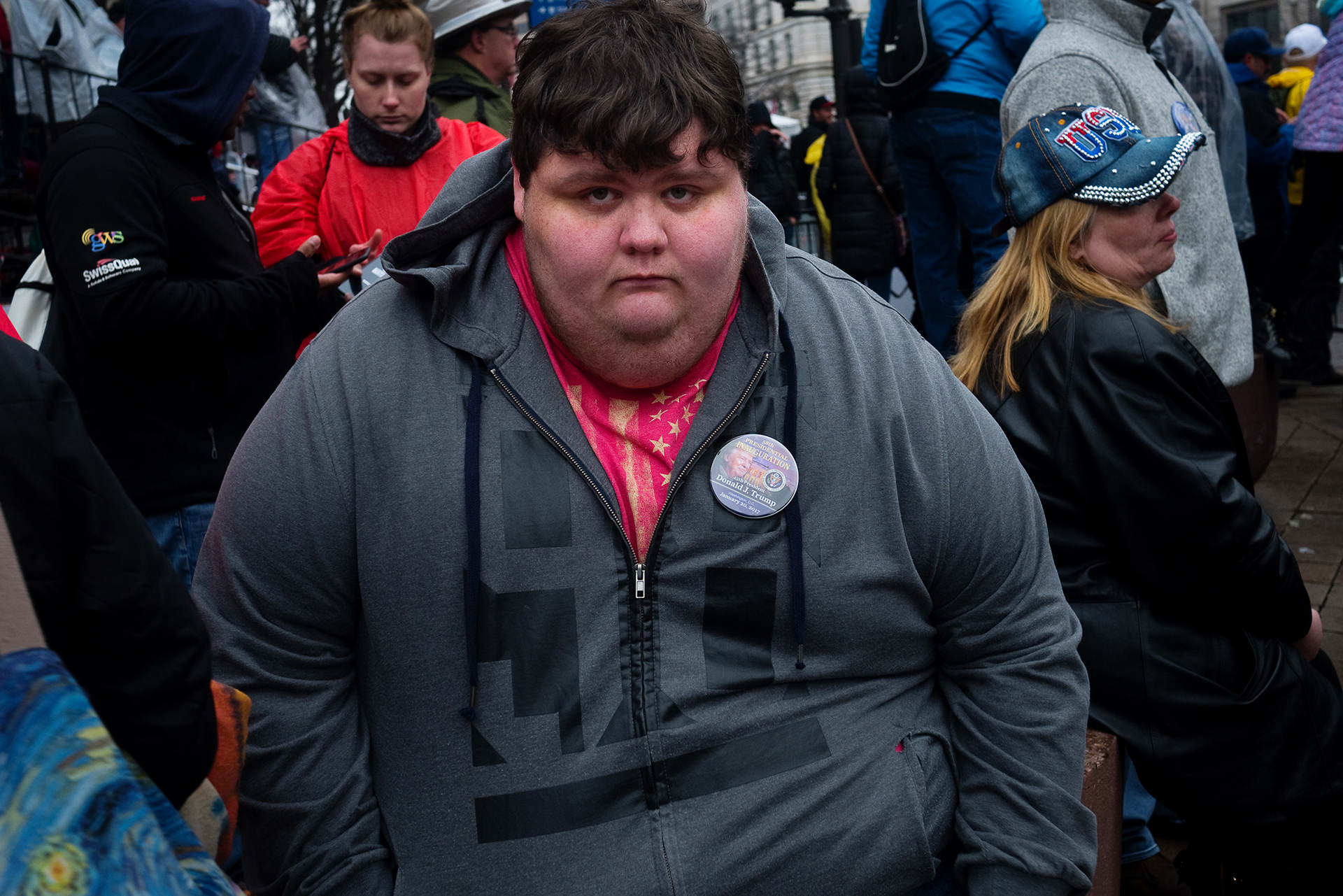I thought I was going to stay away from the inauguration this year, following Congressman John Lewis’s principled example. Call it also a persistent sense of disbelief that the day was finally upon us. For many Americans, the months since November 8 have been an interregnum punctuated by anxiety and shouting at loved ones across a political divide. But in the end I wanted to see how this new era begins, and compare Trump’s coronation with the Women’s March the next day.
Posting some of these images on social media, a friend wryly paraphrased W. H. Auden in response: “into many a happy valley descends an appalling snow,” and another commenter evoked Back to the Future with “Where we are going we won’t be needing wheels!” A less amused viewer wrote on a different photograph: “Photographer body shames a Trump supporter.” Perhaps, newly minted President Trump’s dark image of “American carnage” reverberating over the loudspeakers and gigantic video screens set the tone, for a certain tension seemed to hang in the air, more grim than celebratory, more angry than joyful.
The Women’s March the next day, despite being an urgent showing of dissent and protest, had a festive atmosphere that had been somewhat missing the day before. Humorous banners and costumes, playful signs and puppets, even the intentional prevalence of the color pink all lightened the mood.
Afterward I went home—like many Americans—with my sense of profound unease unresolved. Having covered as a photojournalist the wars in Kosovo, Afghanistan, Iraq, Ukraine, the Arab Spring in Egypt, part of me cynically saw in every political move this last year intimations of coup, collapse, and civil war. Many warned of proto-fascism, the authoritarian strain, and the danger to our institutions that Trump and his supporters embody. But few, I think, could already imagine serious unrest or violence.
What I had always thought of as my more rational inner voice would reassure me, and urge me not to surrender to hyperbole, become a laughing stock, a conspiracy theorist raving on the subway while begging for a cigarette.
But a week of ugly frivolity followed, with squabbles and lies over inauguration crowd sizes and uglier conflict with Mexico. Democratic mayors reaffirmed the role of sanctuary cities; Boston’s Martin Walsh said, flanked by his conspicuously multi-ethnic staff, “If necessary, I will use City Hall itself to shelter and protect anyone targeted unjustly.”
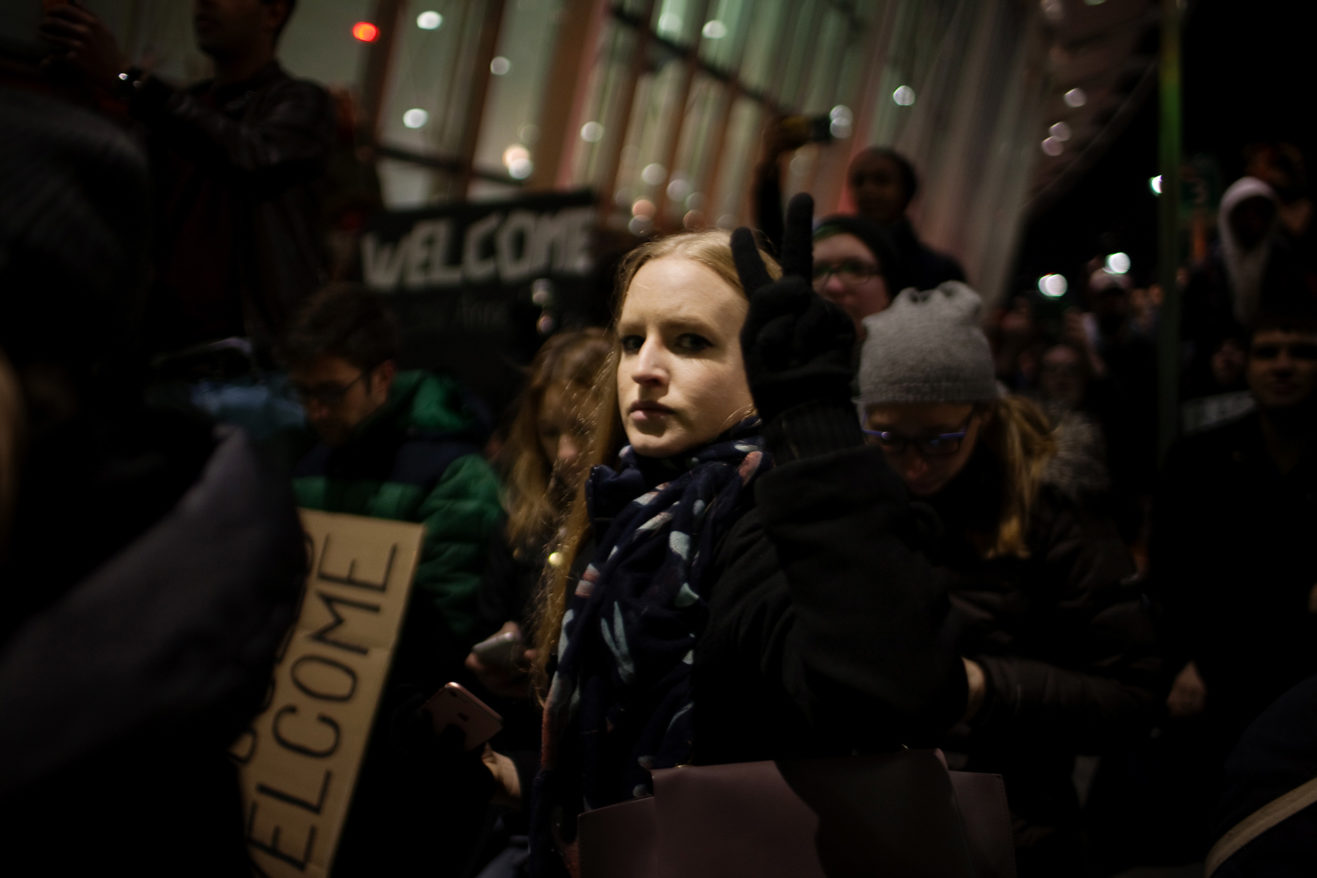
And then on Friday, January 27, came President Trump’s Executive Order ostensibly “to protect the American people from terrorist attacks by foreign nationals.” News quickly spread that travelers from the seven countries specifically excluded from entering the United States—Iraq, Syria, Sudan, Iran, Somalia, Libya and Yemen—were getting detained and deported as they arrived at American borders, despite holding valid visas issued before the order and in many cases being green card permanent residents with visa free entry rights. I read the news with both shock and resignation, and then amazement as thousands of people rushed to airports across the country to protest, joined by elected officials and volunteer lawyers demanding redress.
Not to underplay all of the other Trump Executive Orders and actions on pressing conflicts that transfix the nation: Obamacare, pipelines, controversial Cabinet appointees, the Supreme Court nomination, too many to list, but this issue hit home for me.
For as a first generation Chinese American, I grew up understanding the terrible legacy of the Chinese Exclusion Act and the Asiatic Barred Zone, which for almost a century severely limited the immigration and travel of my community. Even naturalized and native-born American citizens of Chinese descent had to undergo humiliating and intrusive interrogations each time they returned to American shores if they left, and even more severe quotas on women and children meant that families were separated for decades or forever.
Recently, through FOIA and National Archives requests, I read my late father’s Chinese Exclusion Act case files for the first time, bringing back to life his experience as a “paper son” in 1951. He was fleeing grinding poverty and the violence of the communist revolution and civil war. To emigrate to the US, he left behind in Hong Kong my mother, brother, and sister, and had to assume a fictional identity, that of the son of an existing American citizen.
His sponsor, my great-uncle, had smuggled himself from Cuba hidden in the coal hold of a freighter decades before. Both later took advantage of the Chinese Confession Program, an amnesty that gave them a path to true naturalization and citizenship, a debt they repaid with the loyalty so many immigrants have for their adopted country.
But it was only the passage of the Hart-Celler Immigration and Naturalization Act of 1965 that ended racial discrimination of potential immigrants. President Lyndon B. Johnson’s remarks, made at the base of the Statue of Liberty in New York Harbor, are worth quoting at length today:
“…the immigration policy of the United States has been twisted and has been distorted by the harsh injustice of the national origins quota system. Under that system the ability of new immigrants to come to America depended upon the country of their birth. [….]
It has been un-American in the highest sense, because it has been untrue to the faith that brought thousands to these shores even before we were a country. Today, with my signature, this system is abolished. We can now believe that it will never again shadow the gate to the American Nation with the twin barriers of prejudice and privilege.”
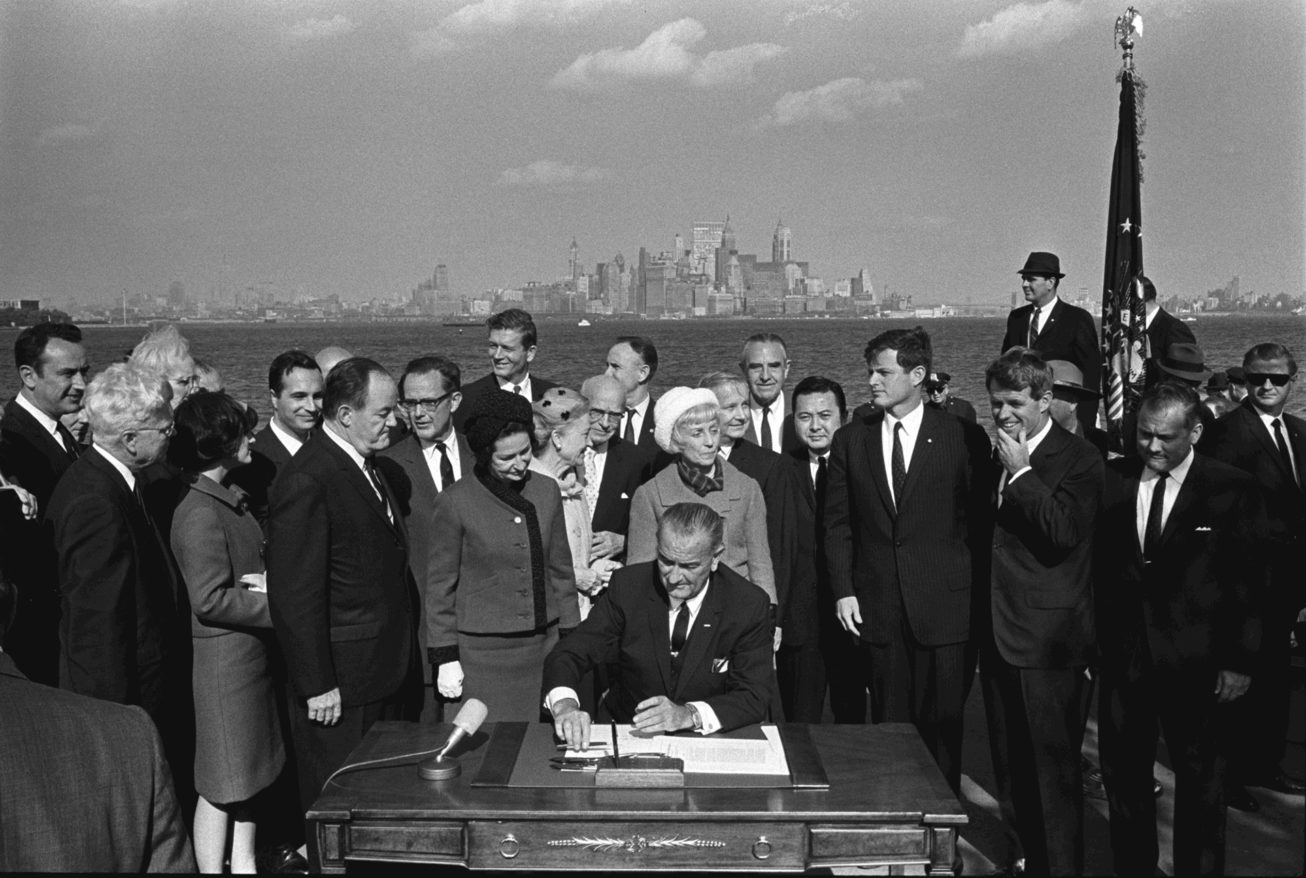
His wife Lady Bird, Vice President and Mrs. Hubert Humphrey, Senators Robert and Ted Kennedy, Averell Harriman, John Lindsay, MacGeorge Bundy, Ambassador to the UN Arthur Goldberg, Senator Philip Hart of Michigan and Congressman Emanuel Celler of New York, the co-sponsors of the bill, and many others surrounded President Johnson. They were the most important public figures of the era, mostly forgotten and fading into obscurity half a century later. All white, except for Hawaii Senator Daniel Inouye, and they are all dead now. But entirely knowingly or not, they made the United States who it is today, at that moment enacting the law that, despite the many flaws of American immigration policy over the years, has ensured a bedrock of equality—at least in aspiration.
It’s also worth noting that the first official White House photographer, Japanese-American Yoichi Okamoto, who was given great access at almost all times by LBJ and did a brilliant job consistently, made this photo.
As a direct result of the law, my mother was able to join my father in the Bronx, my brother to go to university and graduate school in Michigan, my sister to sponsor her fiancé for his emigration. My parents never let me forget that I would never have been born otherwise, and that they might never have seen each other again.
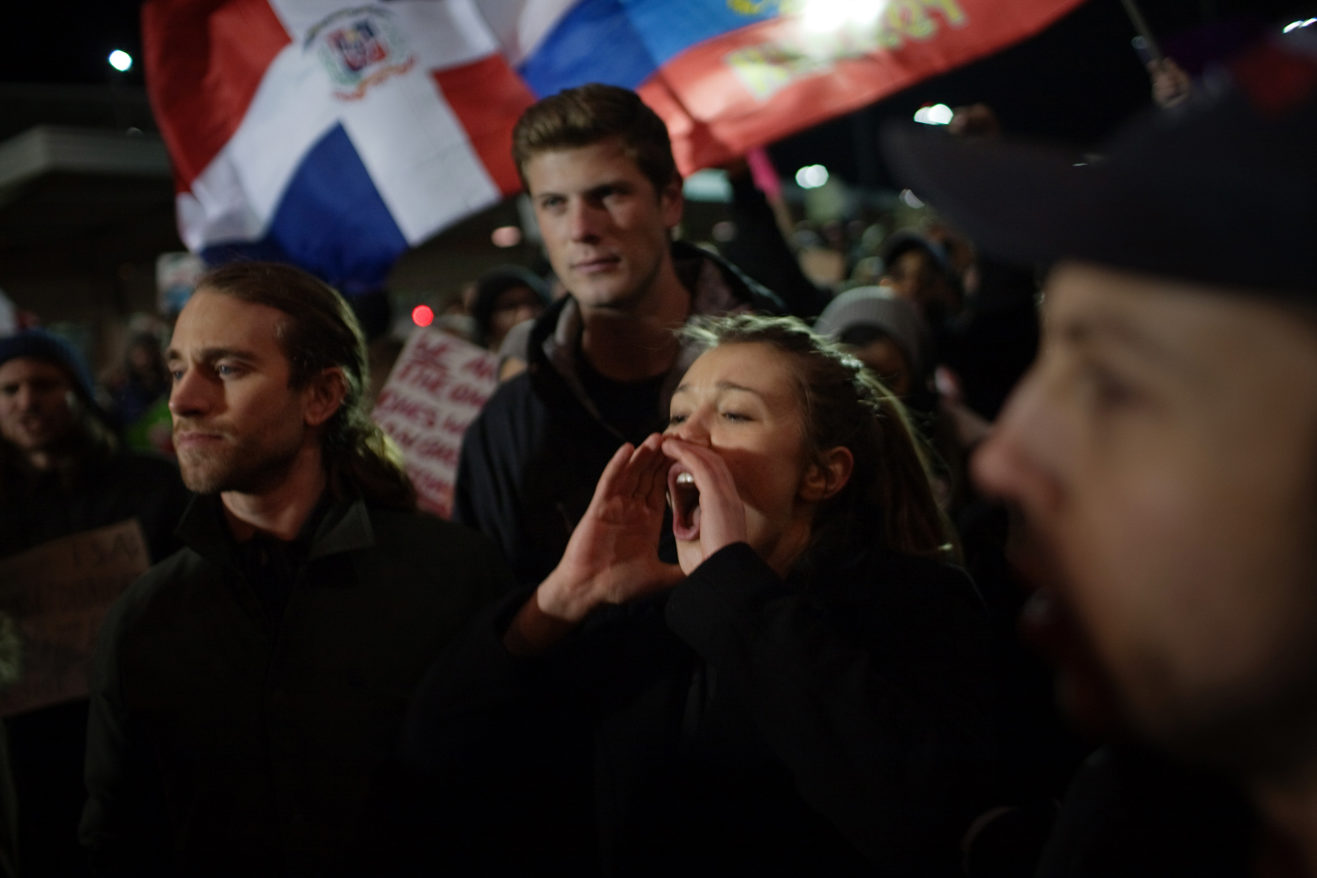
So on a cold Saturday at JFK Airport, I felt myself not only a journalist but a protester also. It is not too far a stretch of the imagination to compare my parents’ experiences with those of stranded immigrants and their sundered families today. We were the first national group to be singled out for racist discrimination by the Chinese Exclusion Act. Unfortunately, we were not the last.
The 1965 law will be part of legal challenges to President Trump’s Executive Order. When Federal Judge Ann Donnelly issued her temporary stay on parts of the Order, the thousands of protesters at Terminal 4 roared with cheers. On the subway headed back to Manhattan, as expected, it was just another Saturday night of revelers and tired New Yorkers heading home.
